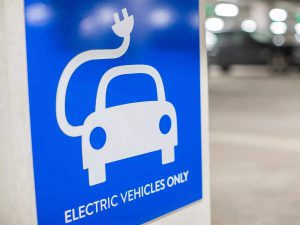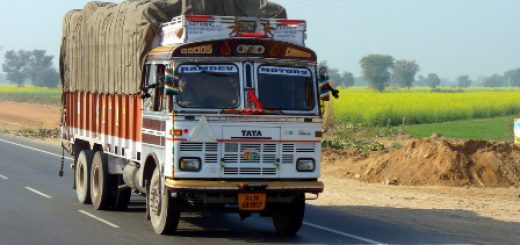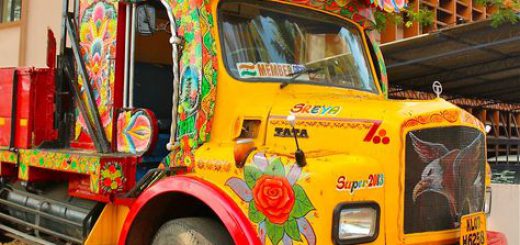View: Setting the agenda for a zero emission freight transition in India
There are different policy levers for India to consider while looking at pathways towards zero emission trucking, ranging from mandatory CAFE regulations for MHCVs, green cess on diesel fuel, capital subsidies for Zero Emission Trucks and charging infrastructure, minimum share of electric fleet requirements, among others.
As the 14th Clean Energy Ministerial and the G20 Energy Transitions Working Group meetings kicked off this week hosted by India, we saw unprecedented focus on clean transportation transitions, bringing together national and sub-national governments as well as industry and research. A stand-out theme has been a clear intent to address hard to abate segments, specifically medium and heavy duty vehicles (MHDV) and freight operations.
Two new initiatives were launched – the E-FAST programme by NITI Aayog saw commitments of up to 7750 Zero Emission Trucks (ZETs) by 2030 to be deployed by various end-users. These market signals spurred the supply ecosystem to come together and form a High Level Ambition Group which will deliver a clear pathway to increase model availability for ZETs in India.
Why are these two initiatives important?
In FY23, India saw a 34% growth in commercial vehicle sales, reaching 0.96 million units. The MHDV segment made up about 38% of sales, posting a 49% growth over FY22, riding on a robust economic growth pathway. This has also contributed to an increase in road transport emissions – MHDVs which are 4% of the annual automotive sales contribute to about 40% of road transport emissions.
If India is to meet its 2070 net zero goal, transforming this segment becomes imperative. The transition to zero emission freight will require a coordinated approach across four key pillars: Policy, Technology, Infrastructure and Finance. First and foremost, there is a need for an overarching policy framework for ZETs that combines incentives and regulations to enable the transition. The policy framework rests on four pillars (i) create tonnage based MHDV sub-classifications; (ii) ) techno-economic analyses of zero emission technologies based on vehicle weight and end-use applications; (iii) identify key segments that can leapfrog to zero emission technologies; (iv) design an appropriate regulatory and incentive mechanism for each sub-segment.

Creating ZET sub-classifications
The MHDV segment ranges from 3.5T to over 40T vehicles that cover various end-use applications, which cater to different consumers based on the capacity or gross vehicle weight (GVW) of the trucks. Over two thirds is made up on 3.5T to 25T vehicles.
The end-use applications for these vehicles include market load, parcel load and perishables and these vehicles travel between 200 – 500 kms daily. For example, a dumper truck typically falls in the above 25T segment while the mid-mile parcel delivery ranges from 3.5T – 12T. A sub-classification helps break down the MHDV sector into smaller and more achievable bite-size challenges, which can create a more targeted approach towards understanding the scope of the transition we have to enable.
The process of creating sub-classifications includes consultations with OEM suppliers, demand consumers across different vehicle categories, mapping market trends within end-use applications and projecting demand across different regional and sub-regional markets. By 2050, Heavy-duty trucks (=12.5T) are expected to contribute over two-thirds of freight kilometres in India.
Regulatory and Incentive Mechanisms
There are different policy levers for India to consider while looking at pathways towards zero emission trucking, ranging from mandatory CAFE regulations for MHCVs, green cess on diesel fuel, capital subsidies for Zero Emission Trucks and charging infrastructure, minimum share of electric fleet requirements, among others.
Fuel economy standards if designed with sufficient stringency, enforced, and periodically revised, can push the market towards low emission technologies, and support early-stage market development with a technology neutral approach. India could also consider a credit mechanism embedded in the fuel economy regulations for MHDVs, as it does for the passenger vehicle segment with the CAFE regulations.
An incentive mechanism that is specifically designed for ZETs supporting successful pilot projects and priority segments, can demonstrate operational viability and lead to significant air quality and emission benefits, while also laying a strong foundation for accelerated market development. Potential ZET deployment could focus on high-potential applications such as urban deliveries, municipal trucks (e.g. garbage trucks), applications in ports or airports, or transport corridors with distances below 300 km, where overnight charging is possible at depots.
Identifying potential freight corridors across the country in partnership with state governments can serve as an opportunity to deploy scalable pilots that can offer critical lessons on ZET business models as well as efficient deployment of charging infrastructure. Two states in India, Telangana and Goa are the first to set ambitions for ZETs. Mainstreaming zero emission freight within the larger National Logistics Policy framework can further help realise economic efficiencies, bringing down the share of logistics costs in the final costs of goods and services in the country, while delivering higher benefits of reduced emissions.
Need for transition finance
Both these exercises eventually lead to the issue of transition finance. In the past few years, we have seen the two- and three-wheeler segments converging towards price parity between ICE and EVs. But the MHDV sector is still in a nascent stage and will need significant innovations in terms of financial instruments to scale the transition.
The incentive and policy structure to transition a municipal garbage truck to zero emission will be different from that required for a parcel delivery truck or a drayage truck. Thus, creating sub-classifications as stated earlier can help policymakers define an effective regulatory program and financiers to unlock capital for both the supply and demand side.
How can global experiences help?
With regards to regulatory approaches, India can draw on lessons from the EU and the recent proposal by the US EPA on MHDV emission and CO 2 regulations, that leverage fuel economy standards as a key regulatory tool to enable a powertrain shift from ICE to EVs. As the stringency of the norms increase, it will eventually result in increasing marginal costs of abatement for ICE trucks making the shift to electric powertrains a more viable investment.
Drawing on lessons from the recent Advanced Clean Trucks and Advanced Clean Fleets Rule in California, India could consider setting specific manufacturer sales targets for ZETs across priority sub-segments, that will not only help spur EV manufacturing, but will ensure greater model availability and affordability. This can be further supplemented by fleet ZET targets, that can provide demand side signals.
As India focuses on a dual policy approach of industrial development and vehicle electrification, MHDV decarbonisation offers a critical opportunity for India to continue playing a strategic role in global automotive supply chains and become a leader in clean technology development, leveraging its own domestic market scale.




Recent Comments